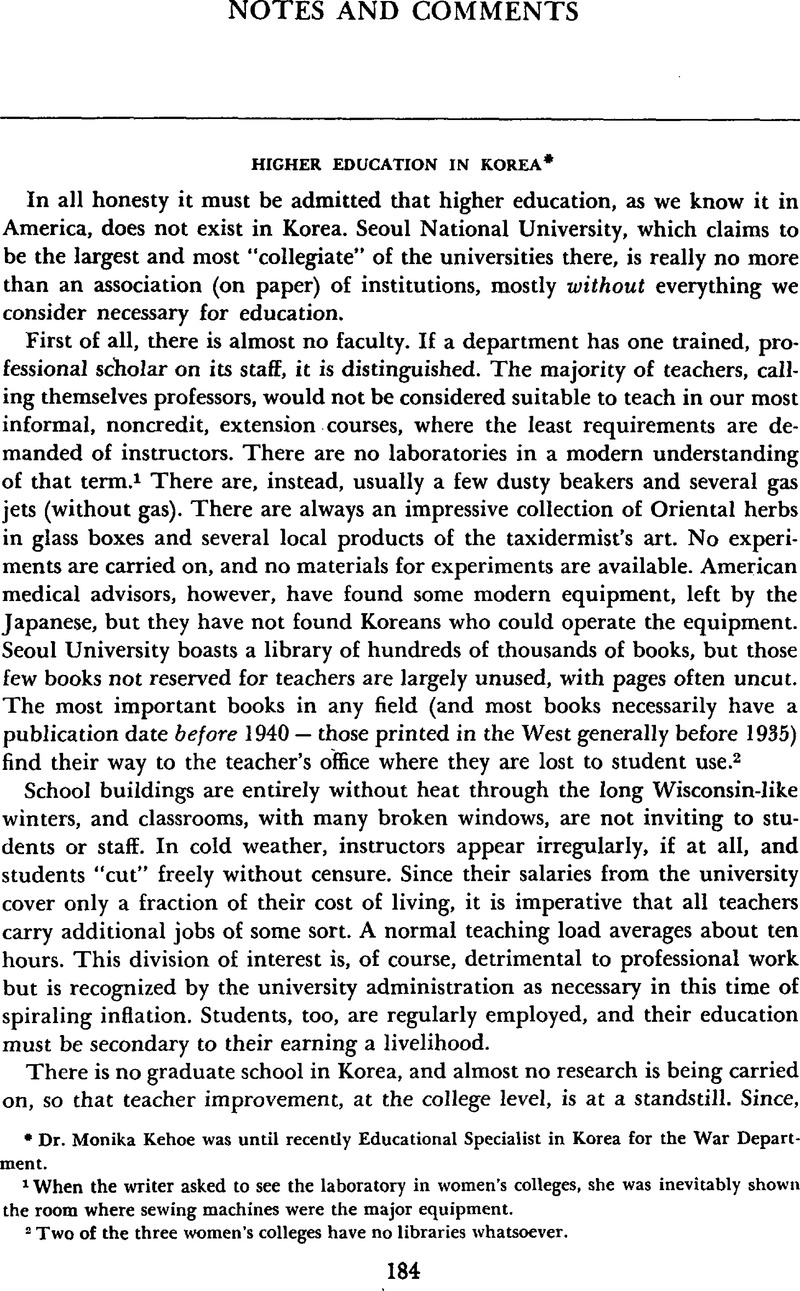Published online by Cambridge University Press: 23 March 2011

1 When the writer asked to see the laboratory in women's colleges, she was inevitably shown the room where sewing machines were the major equipment.
2 Two of the three women's colleges have no libraries whatsoever.
3 A feverish restlessness among the students, however, betrays the aridness of their program and has resulted, during the occupation, in the numerous “riots” reported in the American press. Nearly all of these – even those without large student participation – have been traceable to student instigation, and the centers of disturbance, Seoul and Taegu, are also the centers of college population.
4 During the Japanese occupation of Korea, the faculties of all higher schools (with very few exceptions), as well as those of most middle schools, were Japanese. They set the fashion which they copied from their Prussian models.